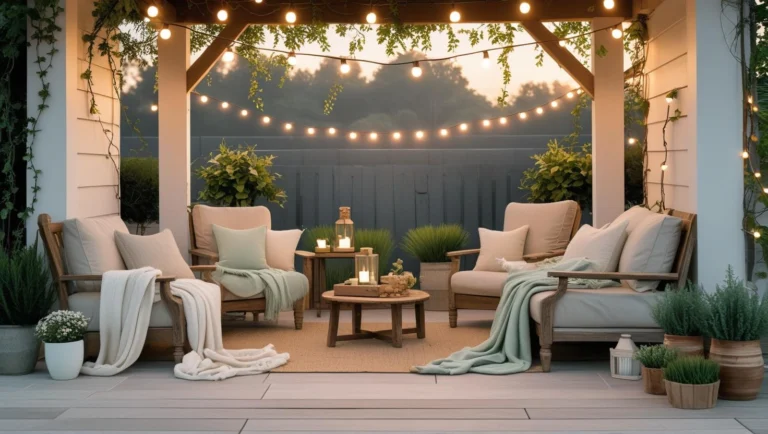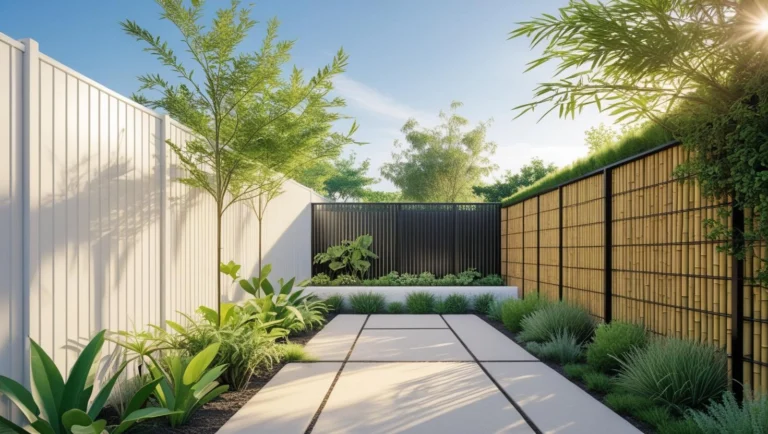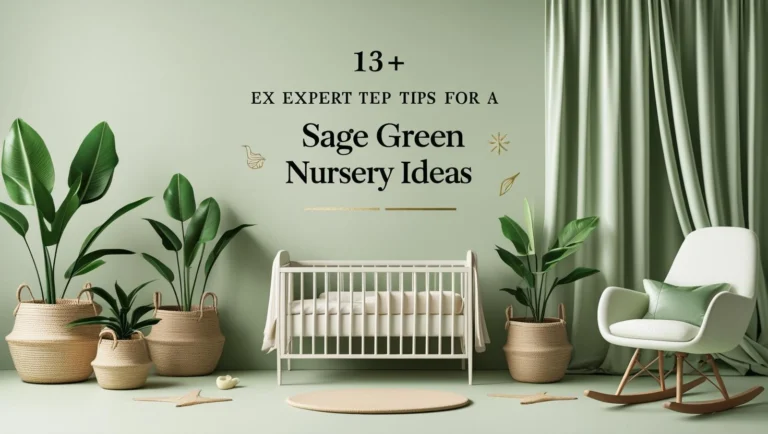17+ Clever Ideas for a Thriving Terrace Garden
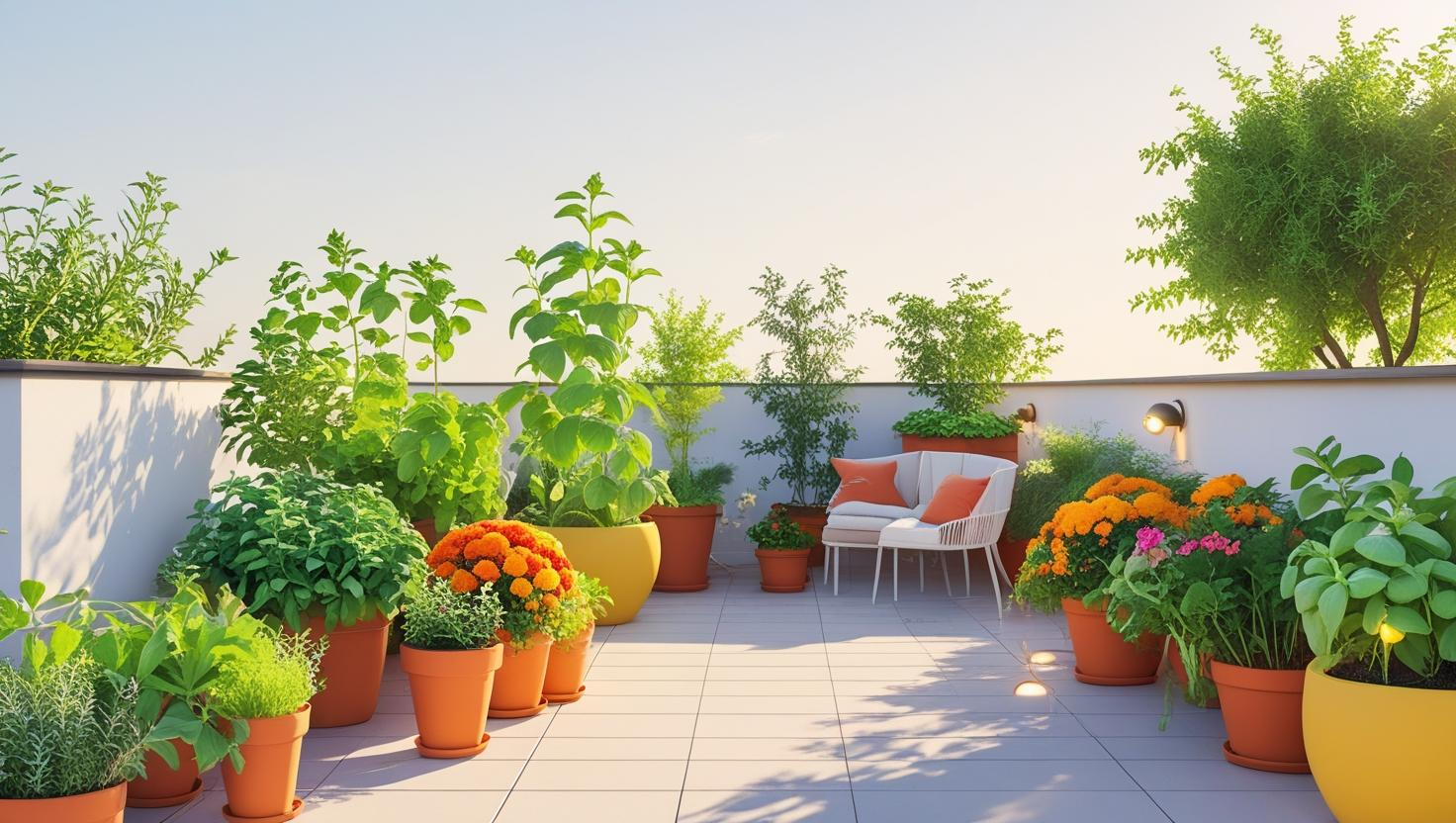
A terrace garden isn’t just about planting a few pots. It’s a way to turn your roof into a calm, green escape. Whether you live in a busy city or just want more fresh air at home, you can grow something beautiful right above your head. After helping families build gardens for over 20 years, I’ve seen how the smallest rooftops can grow into something big. If you want your terrace garden to thrive—not just survive—these ideas will help you get there.
1. Start With the Sun

Before you plant anything, watch how the sunlight hits your terrace. Plants don’t all like the same amount of sun. Some love the heat all day, while others get tired if it’s too bright. Spend a day checking where the sun hits in the morning, at noon, and later. You’ll notice some corners get more light than others. This will help you decide which plants to grow and where to place them. It’s the first step toward a healthy garden.
2. Build Healthy Soil, Not Just Pretty Pots
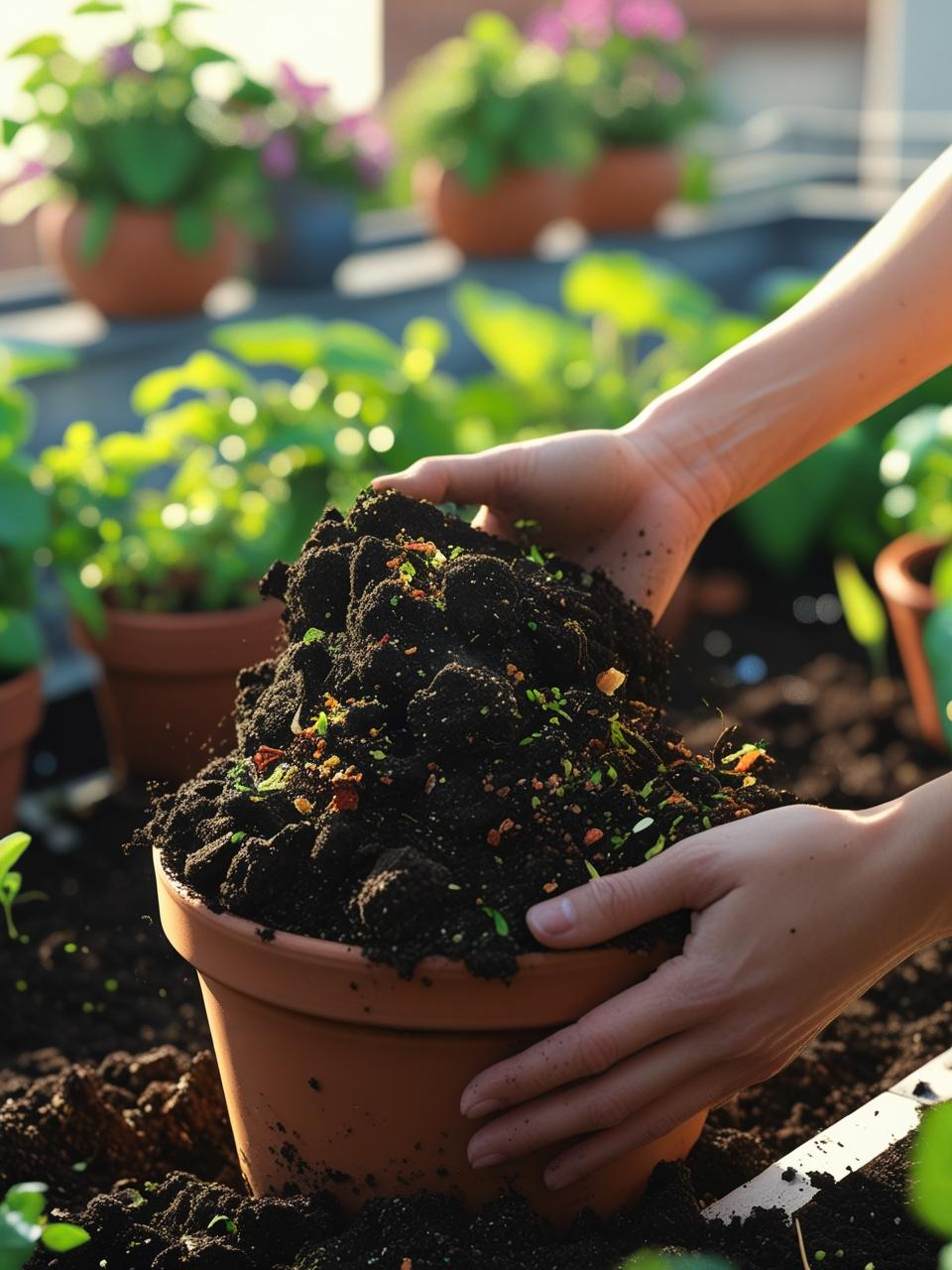
You can’t have good plants without good soil. It’s easy to focus on how the pots look, but what’s inside matters more. Use soil that feels light in your hand but still holds water. Mix in compost if you can. It feeds the plants over time. Avoid using only garden soil from the ground below. It might be too heavy and hold too much water, which can cause roots to rot. Healthy soil will make everything grow faster and last longer.
3. Choose Containers That Breathe
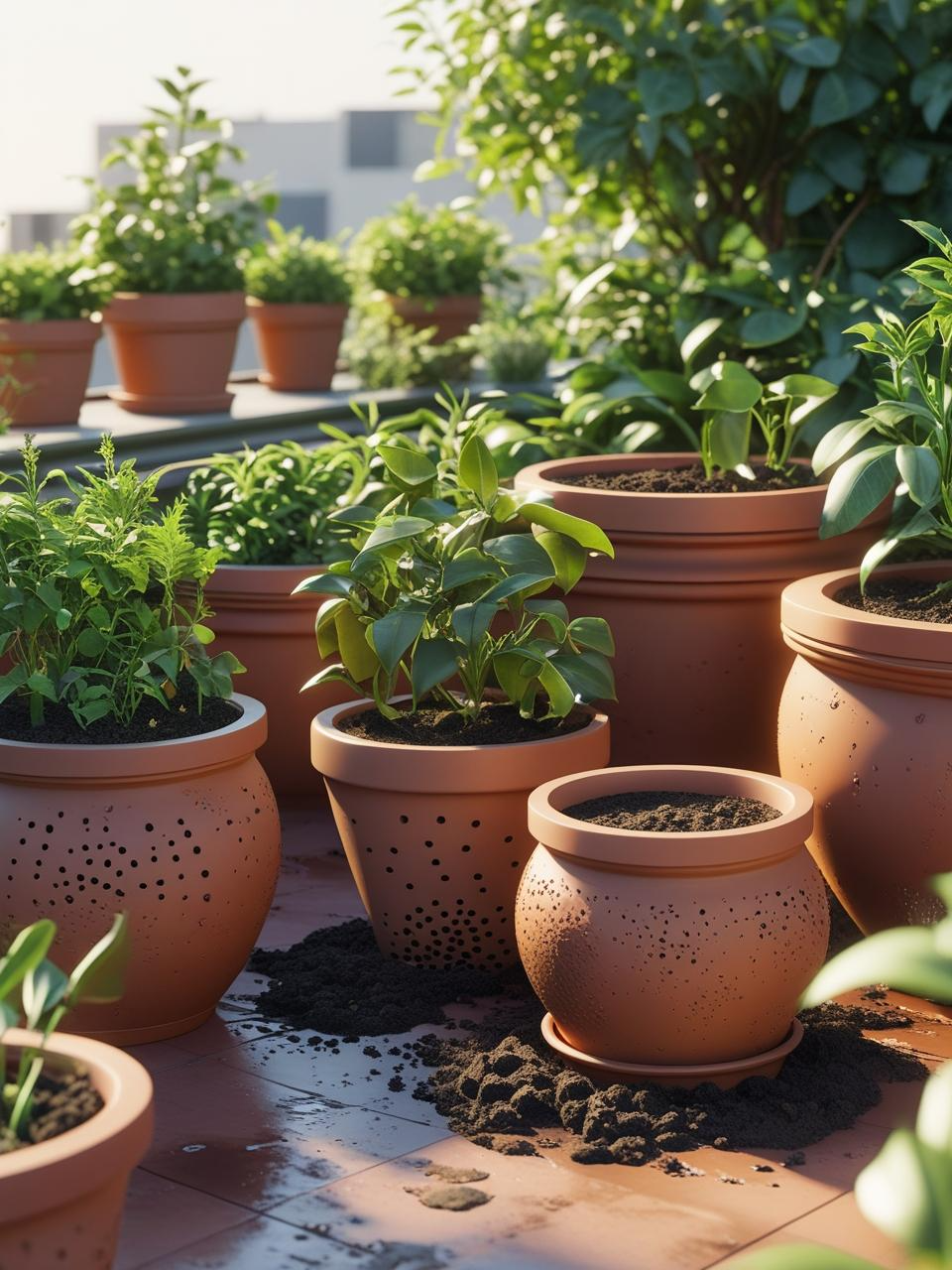
Not all pots are good for your plants. Some keep too much water in and make the roots soggy. That’s not what you want. Clay or terracotta pots are great because they let air flow in and out. They also help extra water dry up faster. If you use plastic, make sure there are holes at the bottom. It’s a small thing, but it keeps your plants from drowning after heavy rain or watering.
4. Try Vertical Gardening in Tight Spots

Even if your terrace is small, you can grow a lot by going up. Vertical gardening means you use walls, railings, and fences to hang pots or stack planters. You can grow herbs, strawberries, or even small vegetables this way. It also keeps plants off the ground, so the area stays clean and easy to walk through. This trick is great for people who think they don’t have space. You have more than you think—you just haven’t used it yet.
5. Pick Plants That Fit Your Life
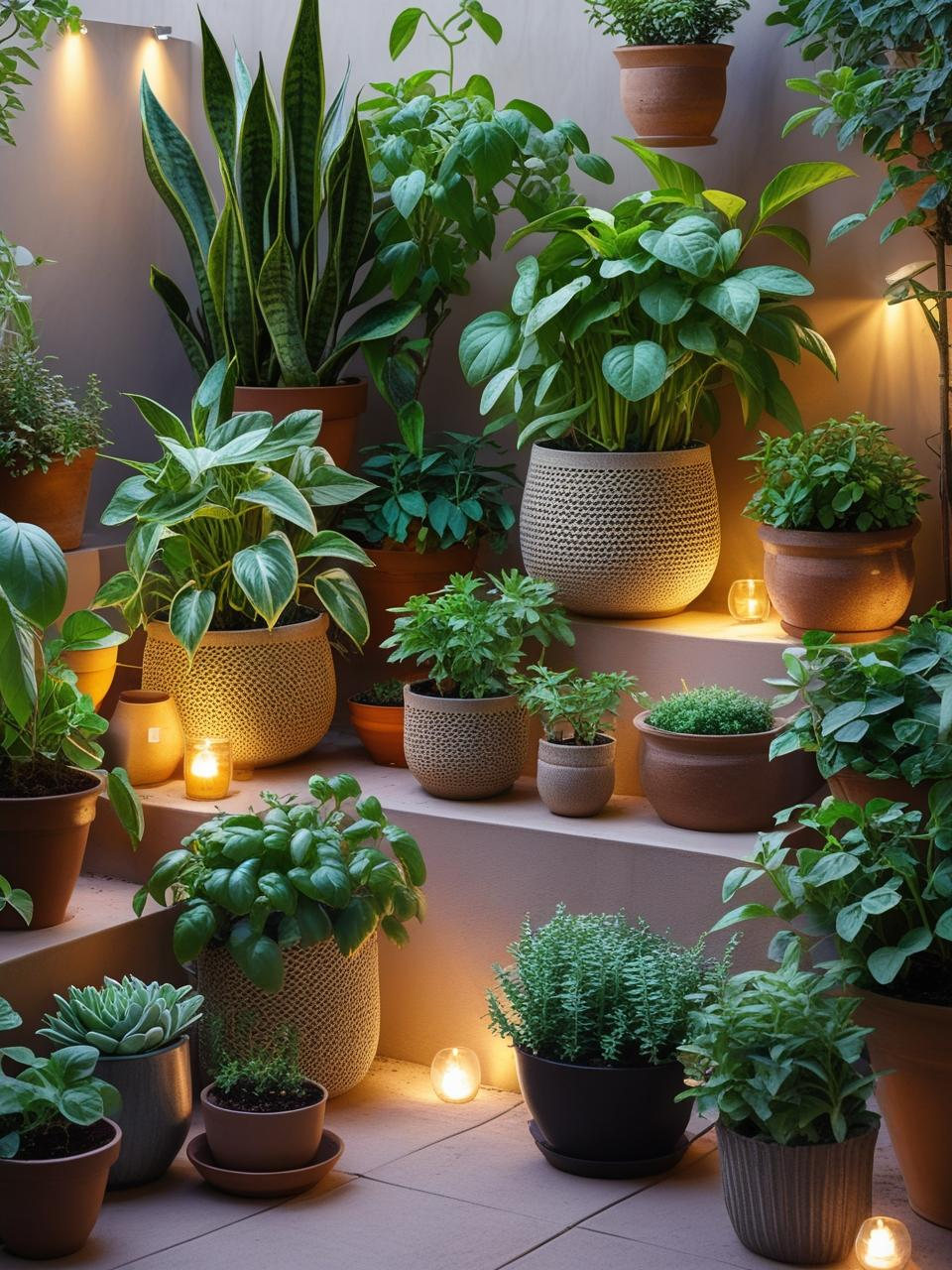
Don’t choose plants just because they look nice. Think about how much care they need. If you’re busy, go for plants that don’t need much water or trimming. Snake plants, pothos, or succulents are easy and still look amazing. If you have more time, you can grow vegetables or herbs. The key is matching the plants to your lifestyle. That way, your garden won’t feel like a chore. It’ll feel like a reward.
6. Water in the Early Morning
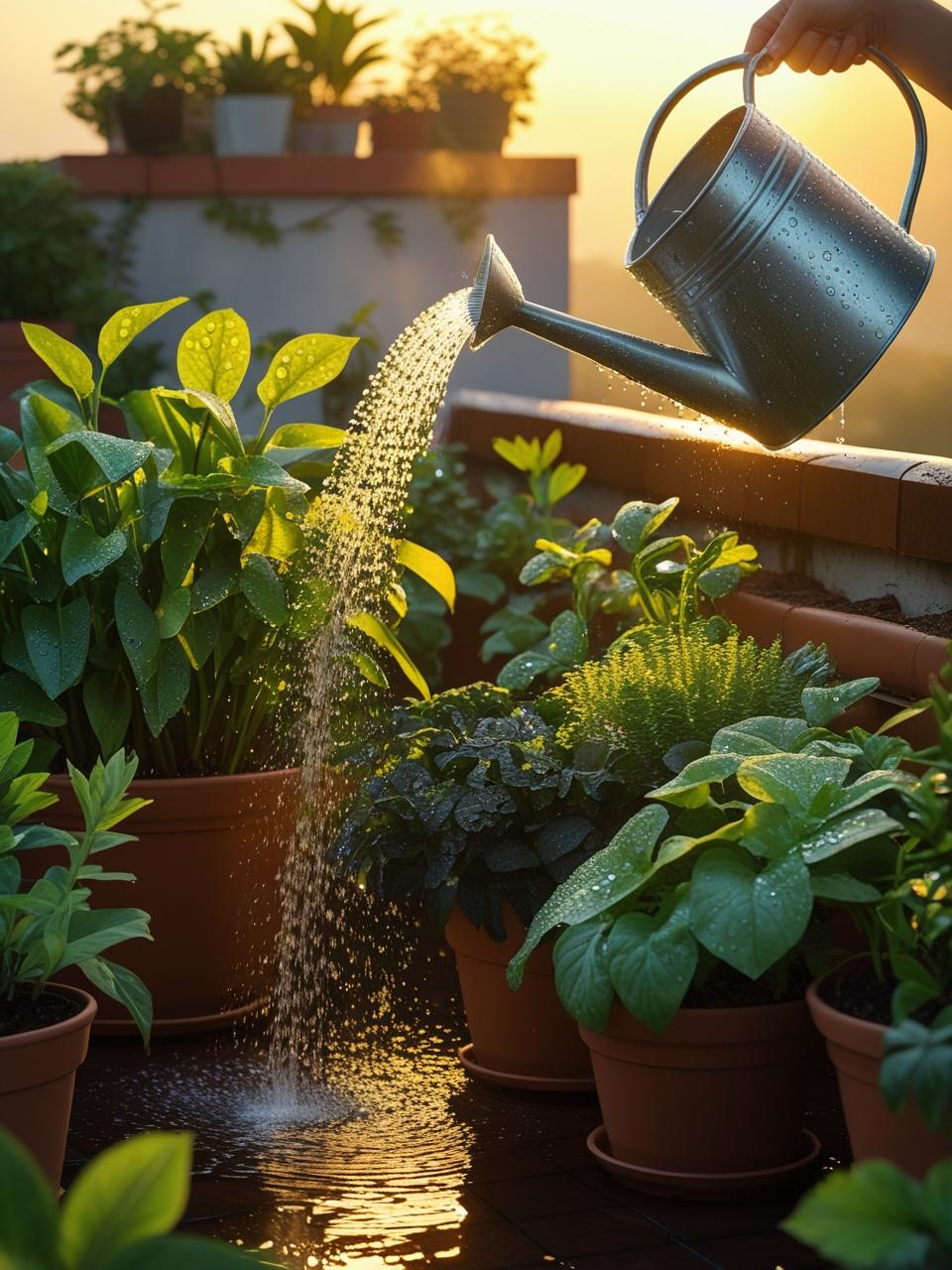
Watering your plants when the sun is high isn’t the best idea. The water dries too fast, and your plants get stressed. If you water late in the day, the water might sit too long and cause mold. The best time is early morning, before it gets too hot. Your plants will soak it up slowly and stay cool all day. It also gives you a calm moment to start your day with something peaceful.
7. Group Plants That Need the Same Care
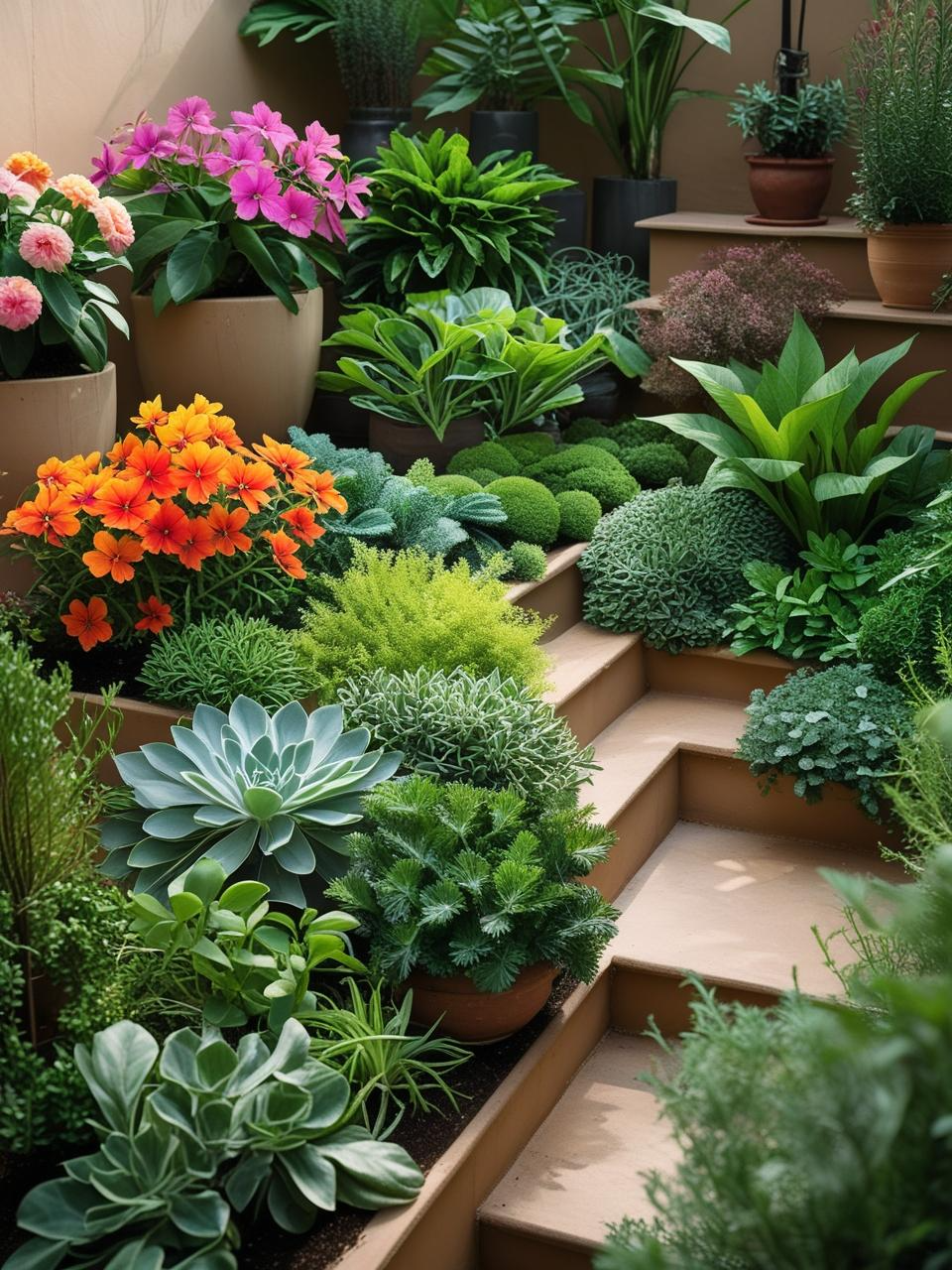
Every plant has its own needs. Some like lots of water, some don’t. Some need full sun, others like shade. If you mix them up, it gets hard to take care of them all at once. But if you group plants with similar needs together, you’ll spend less time worrying. You’ll also avoid hurting one plant while trying to help another. This makes your garden easier to manage, especially if it keeps growing over time.
8. Use Your Kitchen Waste for Compost
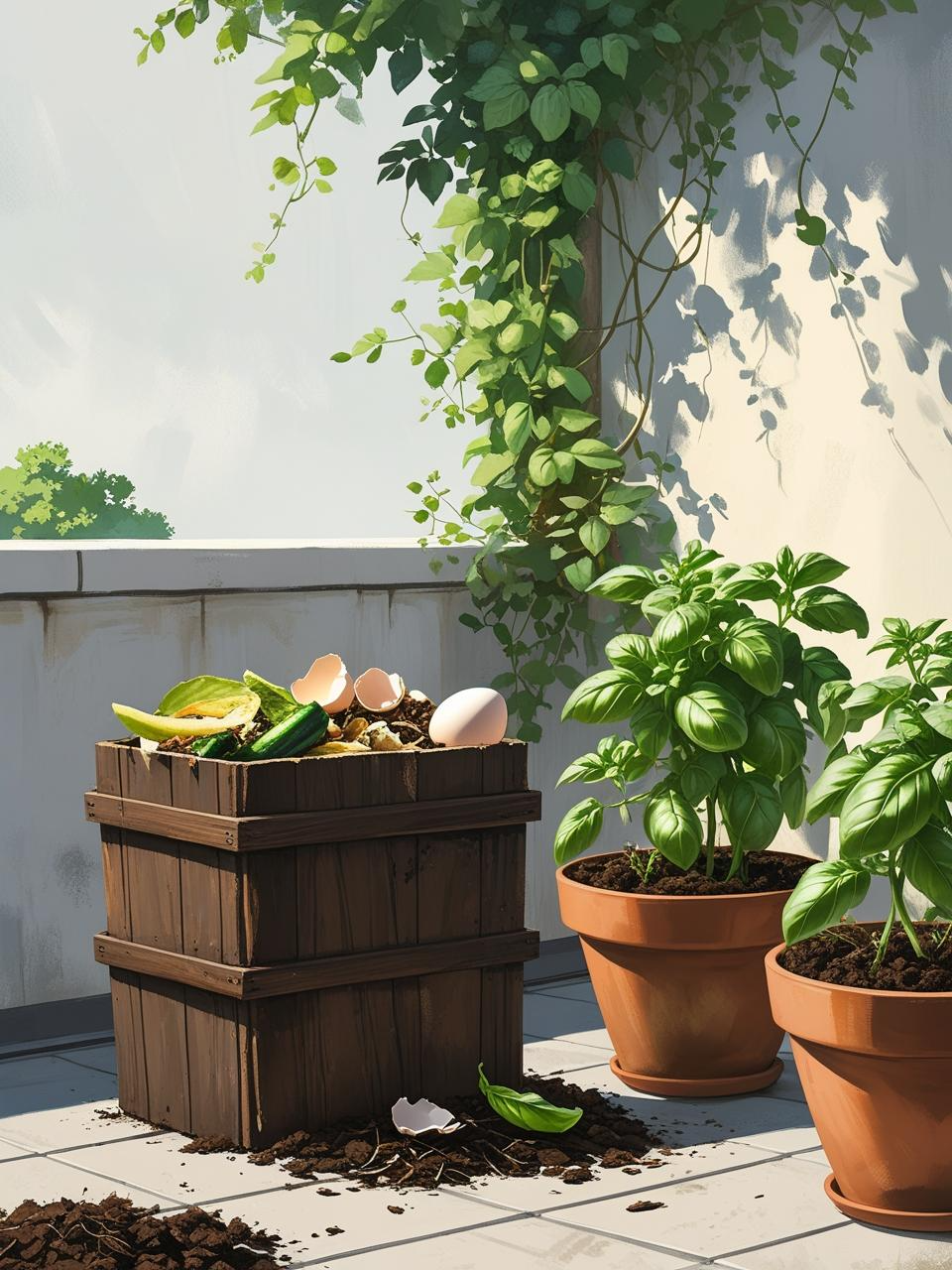
You don’t need a fancy bin to make compost. A small bucket with a lid will do the trick. Save things like veggie peels, eggshells, and tea leaves. Let them break down over a few weeks. Then mix them into your soil. This gives your plants natural food without spending money. It also helps the planet. If you do this right, your plants will show it. Their leaves get greener, and their roots get stronger.
9. Create Shade Where Needed
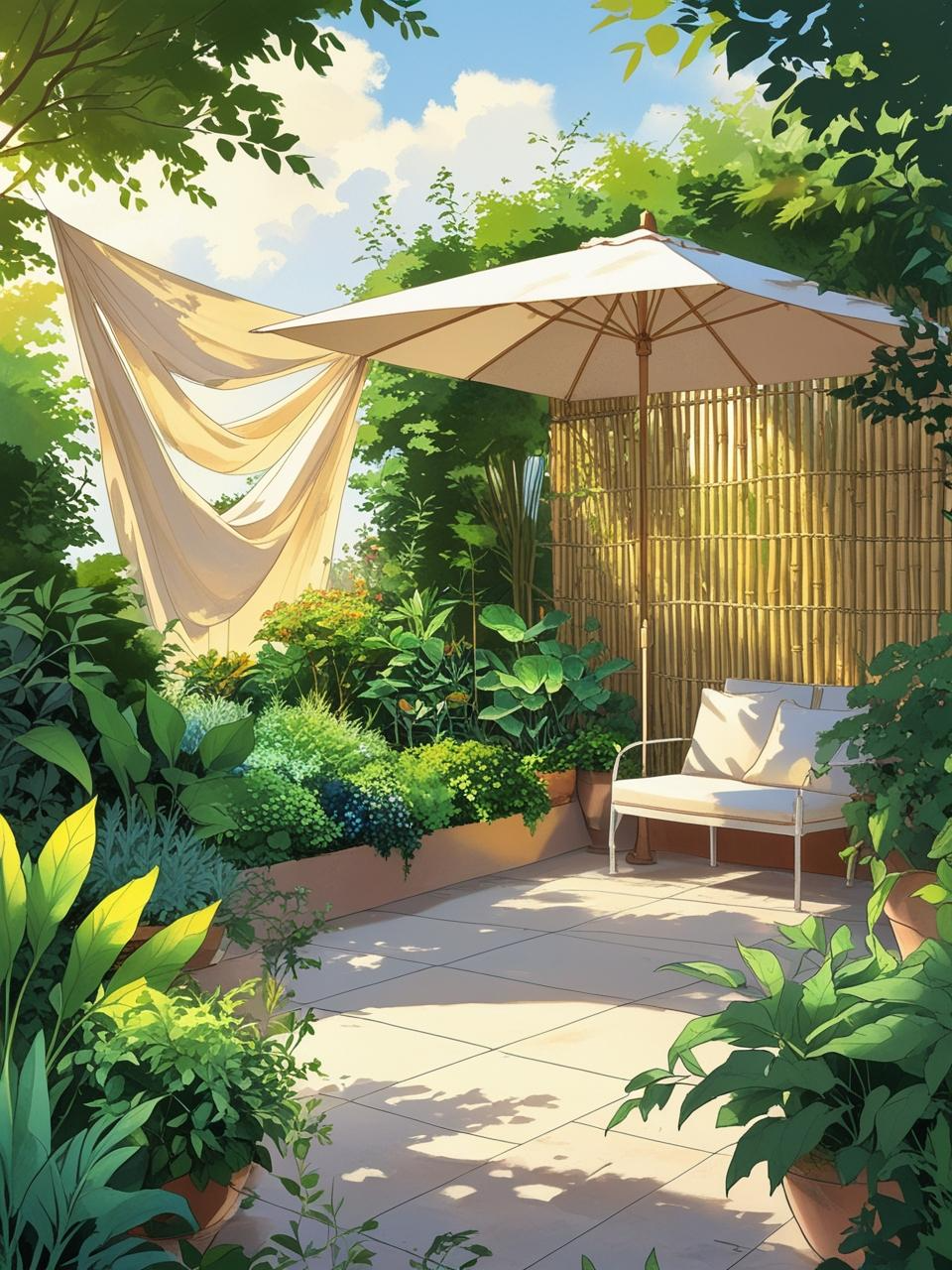
Too much sun can burn even the strongest plant. If your terrace gets hot all day, think about adding shade. You can use an old bedsheet, bamboo screen, or even an umbrella. This helps delicate plants survive the summer. It also makes your space more comfortable for you. You’ll find yourself sitting outside more often when the sun isn’t blazing down on you.
10. Bring in Butterflies and Bees

A garden isn’t just about plants. It’s about life. Add flowers that attract bees and butterflies, like marigolds or lavender. These little visitors help your plants grow by spreading pollen. They also make your terrace feel alive. Watching a butterfly land on your plant is one of the best parts of having a garden. And the more flowers you add, the more visits you’ll get.
11. Keep a Simple Watering System

You don’t need fancy tools to keep your plants watered. A watering can or bucket works fine if you have a small space. But if your garden is growing, you can set up a drip system or use old bottles. Fill a plastic bottle with water, make small holes in the cap, and stick it upside down in the soil. It will water the plant slowly over time. This is helpful if you forget to water now and then or go out of town.
12. Grow Your Own Food
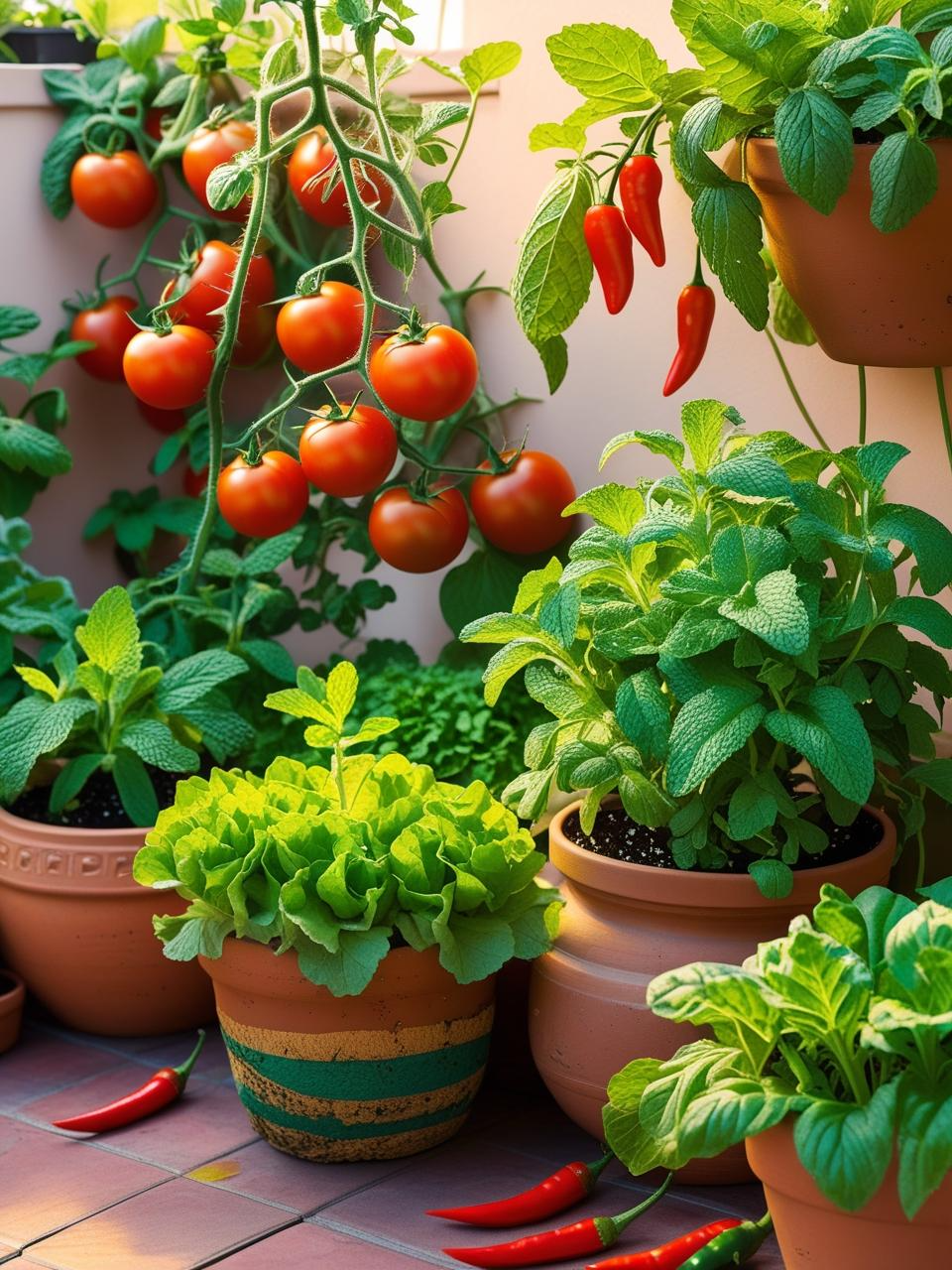
Even on a small terrace, you can grow tomatoes, mint, lettuce, and even chilies. Start with what you eat the most. There’s nothing like picking your own herbs for tea or salad. These plants often grow fast and don’t need much room. Plus, they bring a sense of pride. You’re not just gardening—you’re feeding yourself. It’s something many people wish they started sooner.
13. Use Broken Pots in Smart Ways
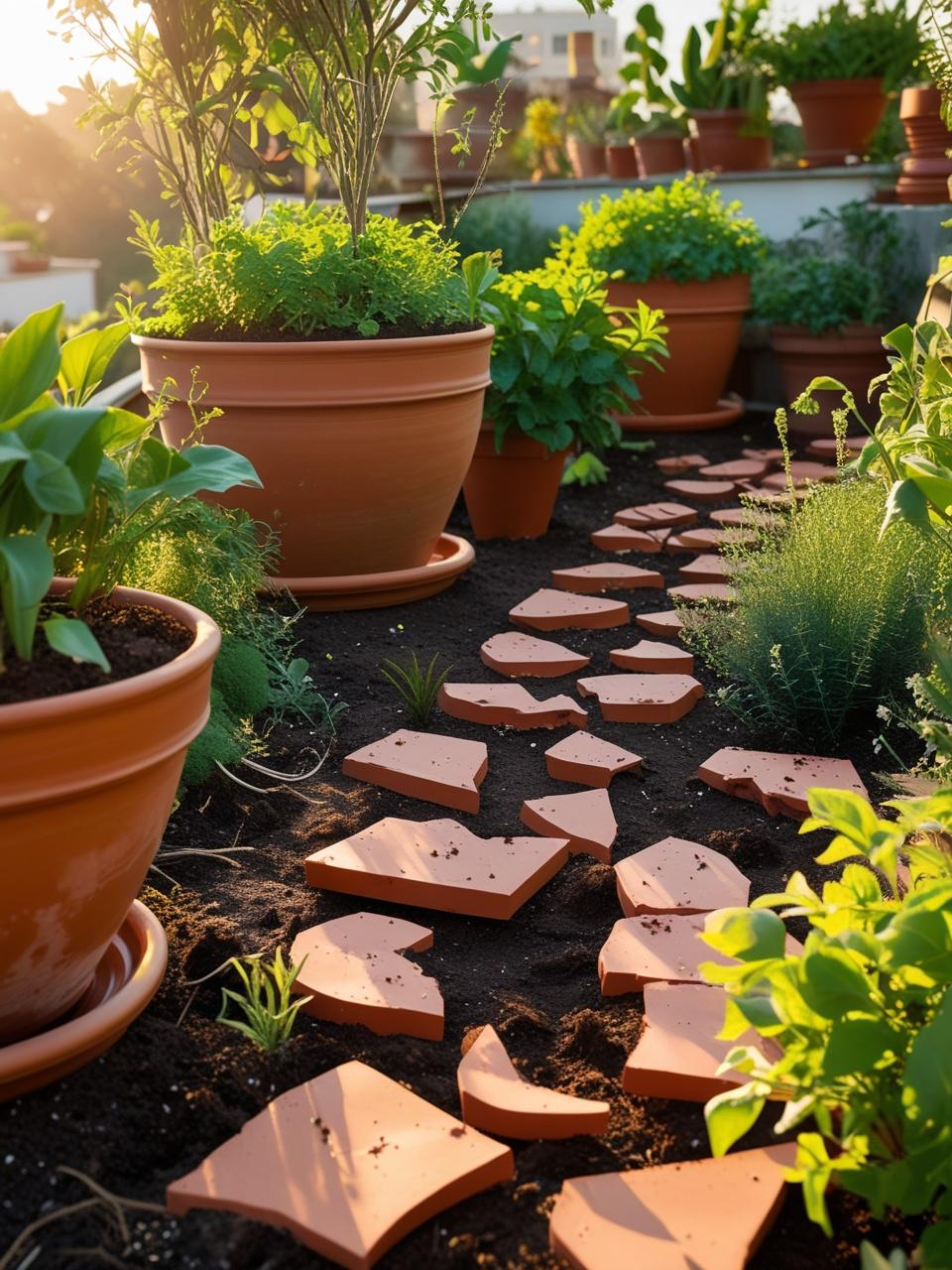
Don’t throw away cracked or chipped pots. You can break them into small pieces and place them at the bottom of new pots. This helps water drain better. You can also use larger broken pieces to create edges or paths on your terrace. These bits add character to your garden and cut down on waste. It’s a clever way to reuse what you already have and keep your space full of charm.
14. Add a Place to Sit and Rest
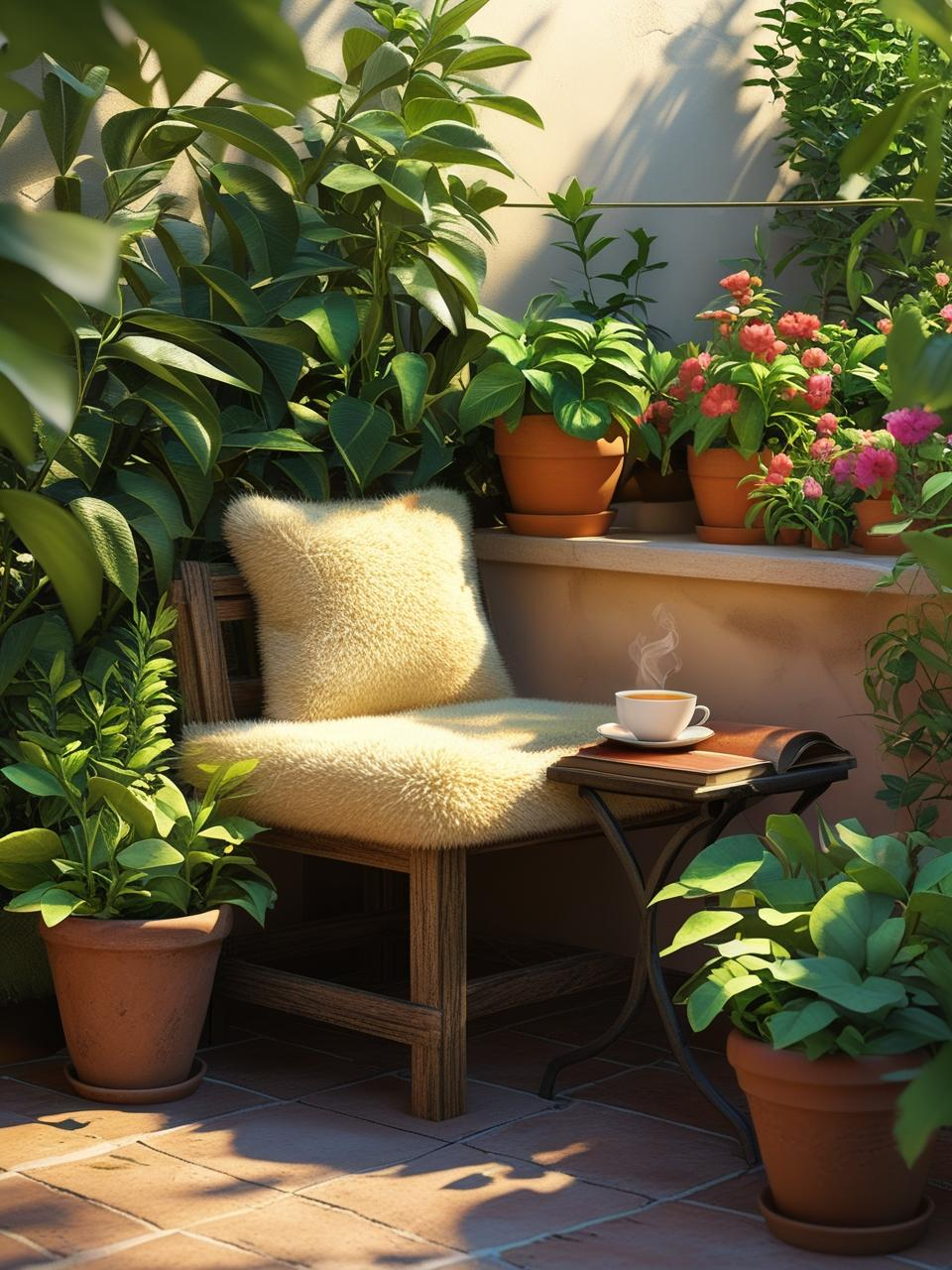
Your garden shouldn’t just be for growing. It should also be for resting. Add a small bench or chair where you can sit. Even a cushion against a wall works. This spot becomes your escape, where you can read, drink tea, or just breathe. A garden only feels full when there’s space for you in it too.
15. Light It Up for Nighttime Beauty
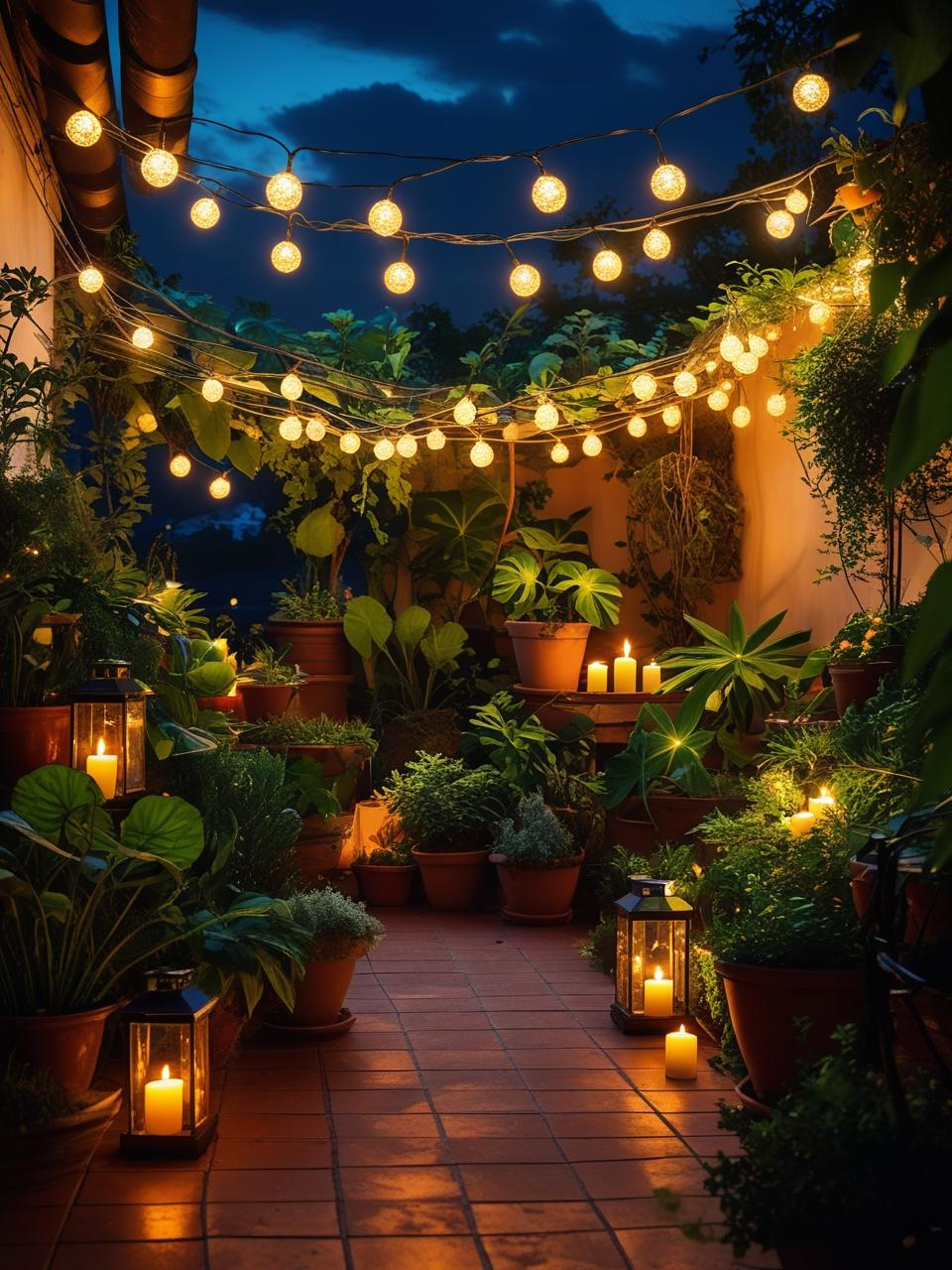
A terrace garden doesn’t stop being beautiful after sunset. Use soft lights to make it glow at night. Fairy lights, solar lanterns, or even candles can bring a cozy feel. When you light up your garden, it turns into a magical place. You’ll enjoy it in a whole new way after dark. And guests will love it too.
16. Add Small Touches That Feel Personal

A thriving terrace garden doesn’t need to look like a catalog. It should feel like yours. Add a painted pot, a funny sign, or a wind chime that reminds you of something. These touches don’t cost much, but they bring warmth and life to your space. They make your garden feel less like a project and more like a part of your story.
17. Check on Your Plants Every Day
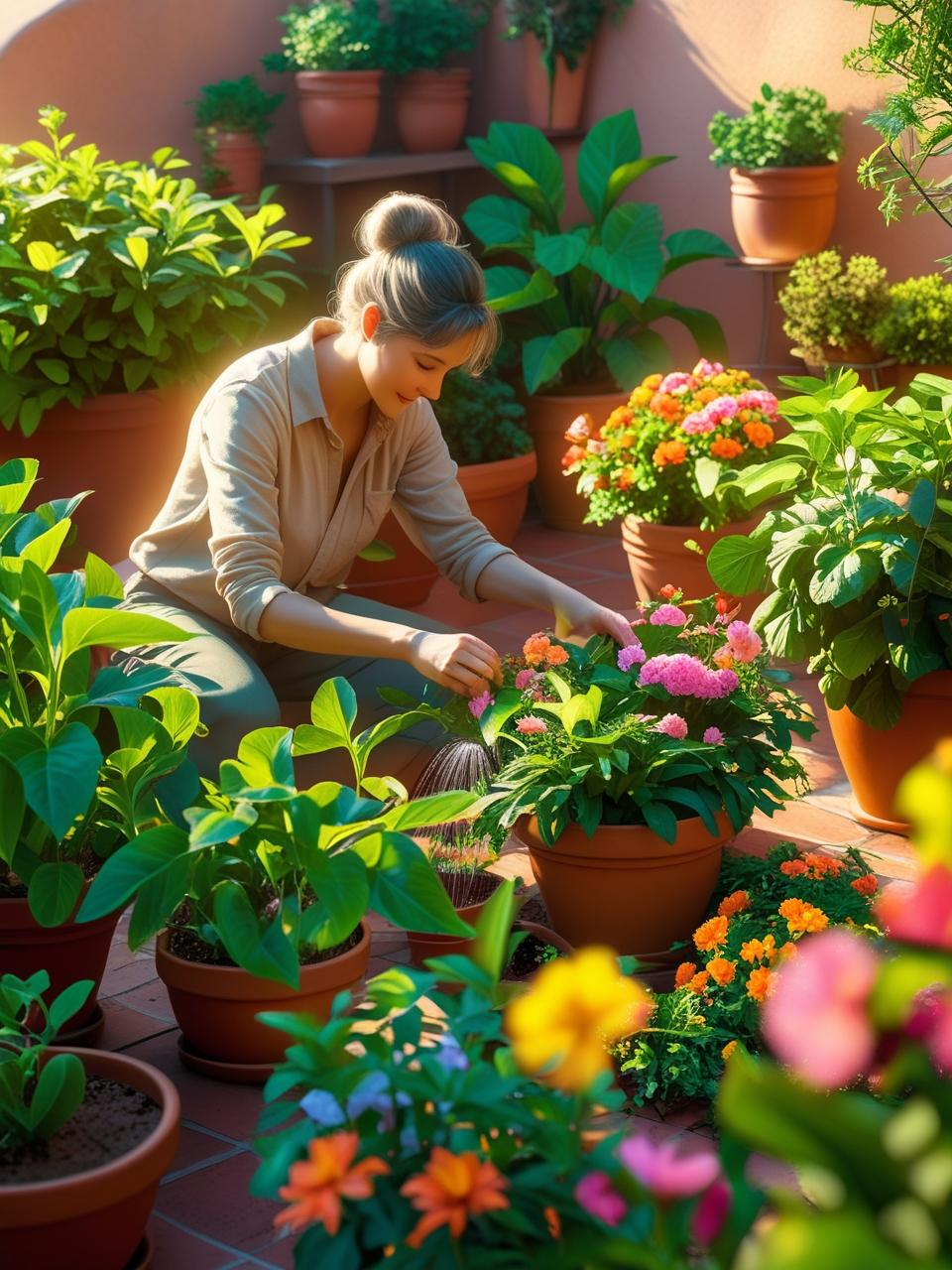
A quick daily look can stop big problems before they start. If you see a dry leaf or a bug, you can fix it right away. It doesn’t take long—just a few minutes. But over time, this habit helps your garden stay healthy. Plants are living things. They change every day. When you check in often, you grow with them.
18. Change Things as You Learn
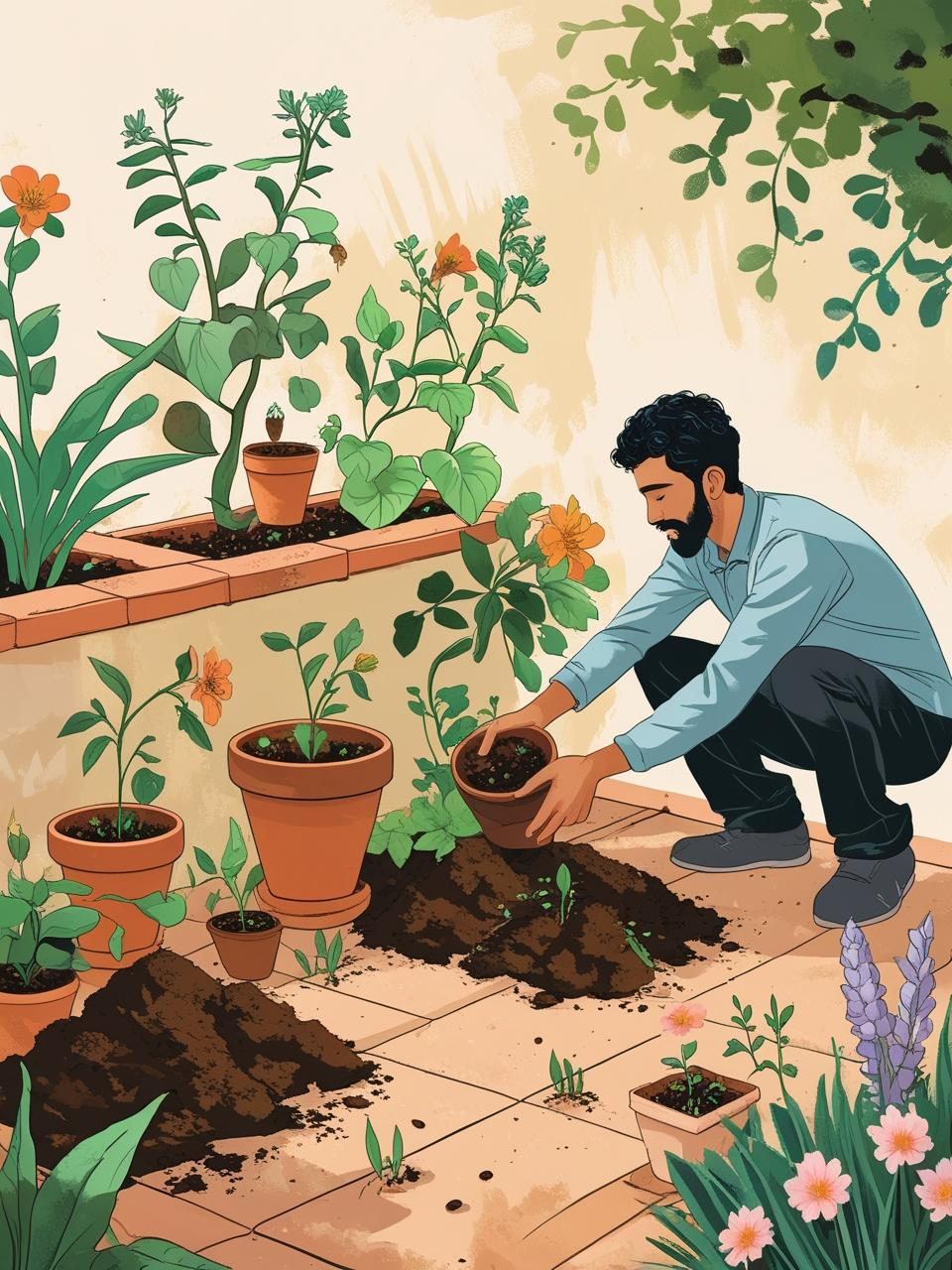
Your garden won’t be perfect the first time. That’s okay. Plants may die. Some ideas won’t work. That’s part of gardening. The real key is to keep trying. Move a plant if it’s not happy. Try a new soil mix if one isn’t working. Every season is a chance to learn more. And with each change, your garden gets better. You do too.
Final Thoughts on a Thriving Terrace Garden
Your terrace garden can become your favorite place in the world. You don’t need to be a pro. You don’t need a lot of space. What you need is time, care, and the willingness to try. Every plant you grow adds something to your life. And with these 17+ clever ideas, you’ll not only grow plants—you’ll grow peace, joy, and a deeper connection to the world around you. That’s the real reward.

